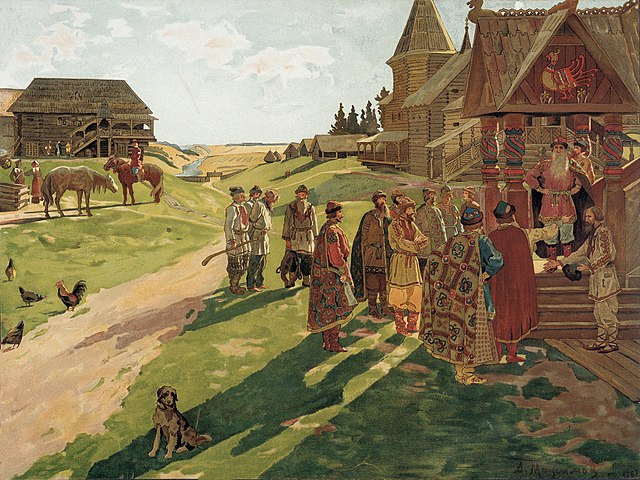Top Qs
Timeline
Chat
Perspective
Upper Oka Principalities
Russian specific principalities From Wikipedia, the free encyclopedia
Remove ads
In Russian historiography the term Upper Oka Principalities (Russian: Верховские княжества, romanized: Verkhovskie knyazhestva, lit. 'Upper Principalities') traditionally applies to about a dozen tiny and ephemeral polities situated along the upper course of the Oka River at the turn of the 14th and 15th centuries.[citation needed] They were reigned by the "upper princes", each of which descended from Mikhail Vsevolodovich of Chernigov (Grand Prince of Kiev c. 1236–1243).[1] As of 2025[update] the areas of these former polities lie within the present-day territories of various federal subjects of Russia: the Tula Oblast, the Kaluga Oblast, the Oryol Oblast and the Bryansk Oblast.[citation needed]

Following the Mongol invasion of Kievan Rus' of 1223–1240, the formerly prominent Olgovichi clan of the Principality of Chernigov gradually declined to a point where the descendants of Mikhail of Chernigov (died 1246) ruled dozens of quasi-sovereign entities.[citation needed] After 1350, as the principalities became wedged-in as buffer states between the ever-expanding Grand Duchy of Lithuania (established in 1236) to the west and the nascent Principality of Moscow (established in 1263) to the north,[1] the various Upper Oka polities fluctuated between alignments with each of these two major regional powers.
By the end of the 14th century, they were obliged to pay annual tribute to Lithuania.[citation needed] The strengthening alliance of Lithuanian rulers with Roman Catholic Poland caused shifts in the balance of power in the region. Most Orthodox rulers of the Upper Oka Principalities, therefore, started to look to Moscow for protection against Lithuanian expansionism.[citation needed] Others sought Lithuanian protection against Muscovite aggression, such as Prince Ivan of Mozhaysk who in 1454 fled to Lithuania to escape from Vasily II of Moscow.[2] Towards the end of the 15th century, most of these princelings had moved to the Muscovite court. In 1494 Lithuania finally renounced her claims to the region.[citation needed]
Remove ads
List of principalities (in order of seniority)
- Odoyev (Principality of Odoyev) and Novosil[1] - the seats of the Odoyevsky princes,[1] retained by them as an appanage until the Oprichnina of 1565-1572
- Belyov (or Belev;[3] Principality of Belyov) - the seat of the Belyovsky princes[1] (1468-1588)
- Vorotynsk - the seat of the Vorotynsky princes,[1] retained by them as an appanage until the Oprichnina
- Mosalsk - the seat of the Mosalsky princes[1]
- Zvenigorod on the Oka - the seat of the Zvenigorodsky princes[1] and the Nozdrevaty princes[citation needed]
- Karachev - the seat of the Khotetovsky princes
- Kozelsk and Peremyshl - the seats of Princes Gorchakov
- Tarusa (Principality of Tarusa or Torusa)[1] and Meshchevsk (now Meshchovsk) - the seats of Princes Mezetsky with their cadet branches of Teterin, Shcherbatov
- Boryatino - the seat of Princes Boryatinsky
- Obolensk - the seat of the Obolensky princes[1] with their cadet branches of Repnin, Lykov, Dolgorukov, Shcherbatov, etc.
Maps of the Upper Oka Principalities
- Early principalities on the Upper Oka c. 1300Principality of Novosil'Principality of Karachev
- Upper Oka Principalities c. 1350
- Upper Oka Principalities in 1389Principality of KozelskPrincipality of Masalsk
- Upper Oka Principalities c. 1400
- Upper Oka Principalities in 1434
- Upper Oka Principalities in 1462
Remove ads
References
Sources
Further reading
Wikiwand - on
Seamless Wikipedia browsing. On steroids.
Remove ads






